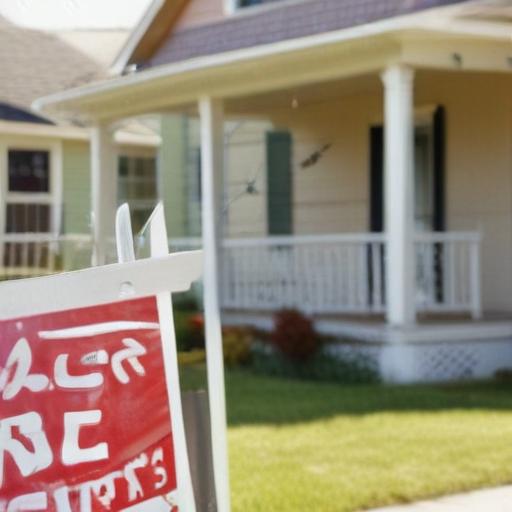The average rate for a 30-year fixed mortgage in the United States has slightly decreased to 6.72%, providing some relief for prospective homebuyers facing ongoing challenges from high home prices and elevated borrowing costs. This rate is a marginal improvement from last week’s 6.74% and is relatively stable compared to 6.73% a year ago, according to mortgage buyer Freddie Mac.
Similarly, the average rate on 15-year fixed-rate mortgages, favored by homeowners looking to refinance, fell to 5.85% from 5.87% last week, down from 5.99% one year earlier. Despite this easing, elevated mortgage rates continue to exert pressure on the housing market, which has struggled with declining sales since 2022 when rates began to rise from the historic lows seen during the pandemic.
The fluctuations in mortgage rates are largely influenced by the Federal Reserve’s interest rate policies and the expectations of investors regarding economic performance and inflation. On Thursday, the yield on the 10-year Treasury, a critical benchmark for setting mortgage rates, dropped to 4.34% from 4.37% the day before.
Recent Federal Reserve decisions have also contributed to the mortgage rate landscape. On Wednesday, the central bank decided to maintain its key interest rate, with Fed Chair Jerome Powell emphasizing that inflation remains above the target of 2%, which complicates the outlook for potential rate cuts.
Economists express cautious optimism, suggesting that if the Fed signals a possible rate cut in September, it could lead to lower mortgage rates by late summer, reminiscent of the trends observed last year. Despite the potential for rates to ease to around 6.4% by year’s end, many analysts predict that the average 30-year mortgage rate will remain above 6% through 2023.
In the meantime, pending home sales have shown a decline, with a seasonally adjusted index indicating a drop of 0.8% in June compared to the previous month, and a notable reduction of 2.8% from June the prior year, according to the National Association of Realtors. This downturn is contributing to a stagnant U.S. homeownership rate, which currently hovers around 65%, the lowest level since 2019.
Interestingly, despite lighter mortgage rates, mortgage applications have also dipped by 3.8% last week, reaching their lowest point since May, yet they remain 21.8% higher than the same time last year. The prevailing economic uncertainties appear to be influencing the decisions of potential homebuyers, as indicated by Joel Kan, the deputy chief economist at the Mortgage Bankers Association.
This evolving situation in the housing market showcases the intricate balance between interest rates, economic factors, and consumer confidence, hinting at potentially brighter prospects for homebuyers in the near future if conditions allow for sustained lower rates.
